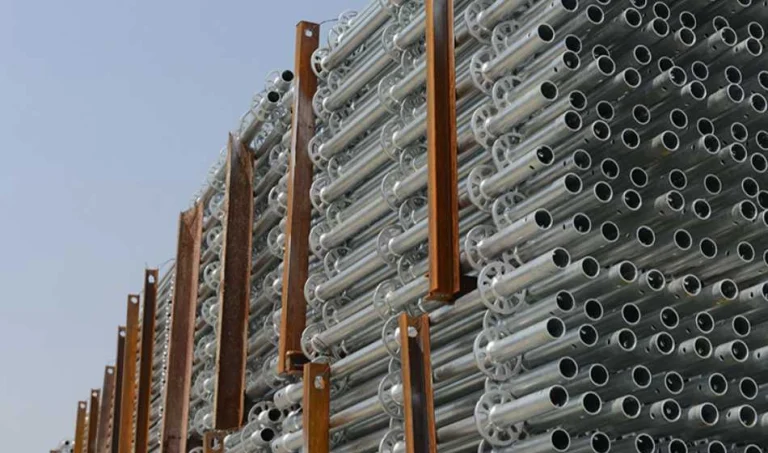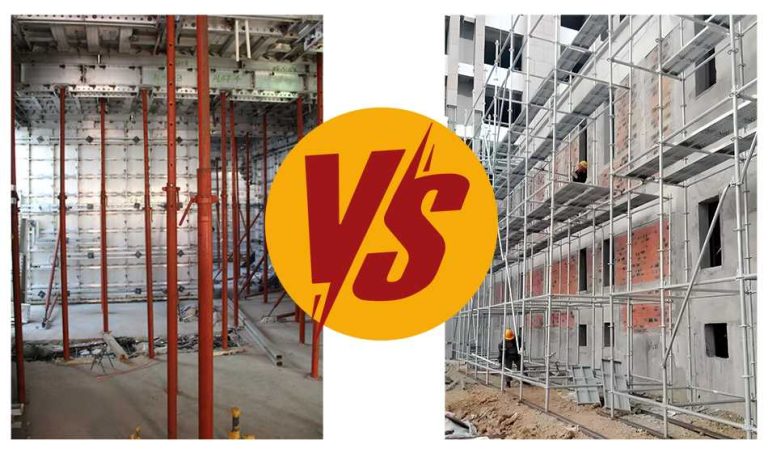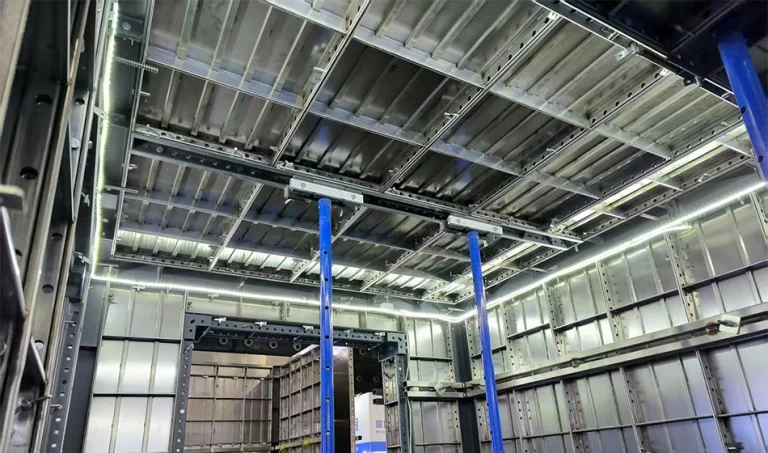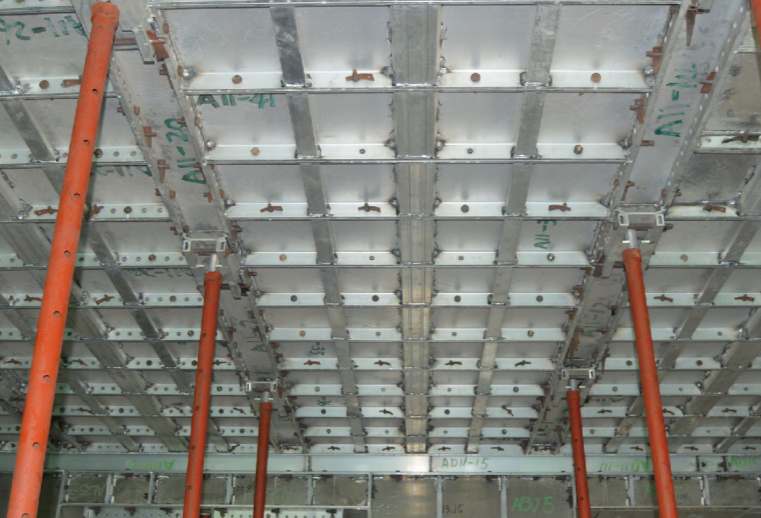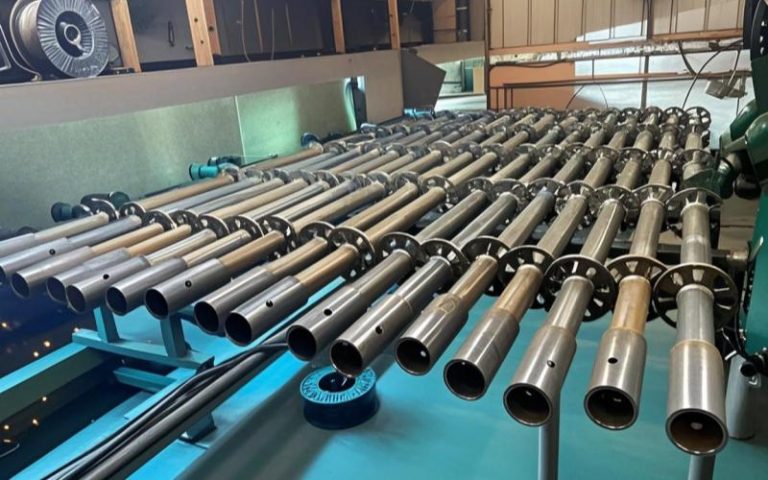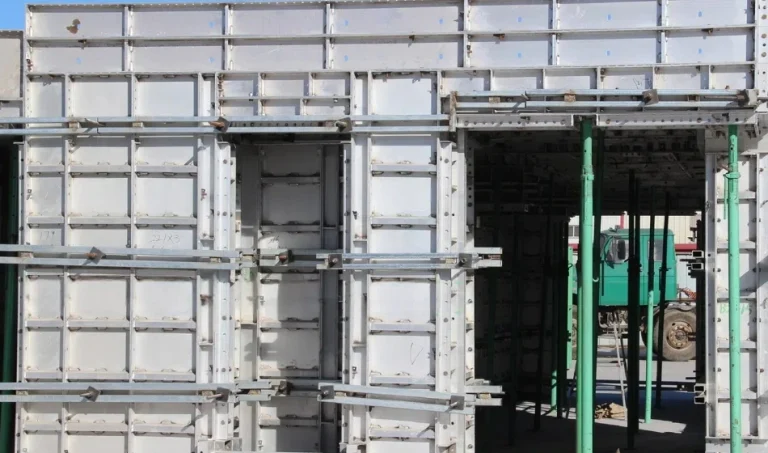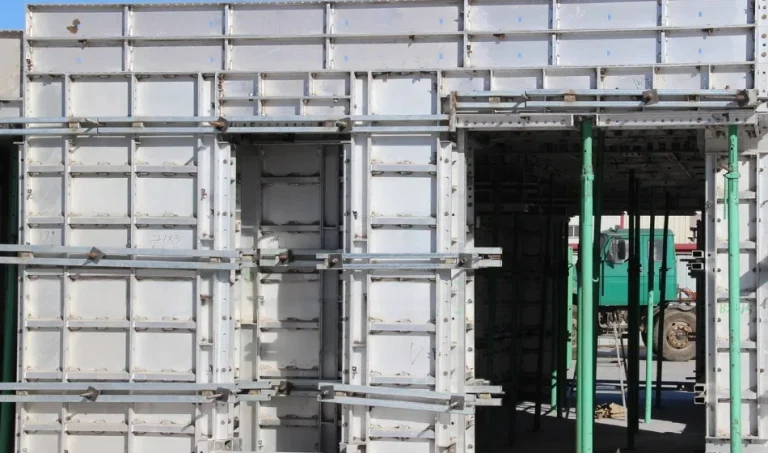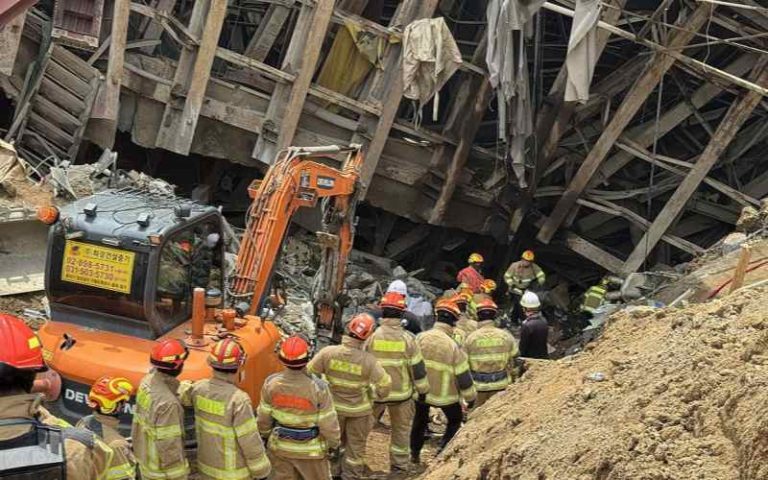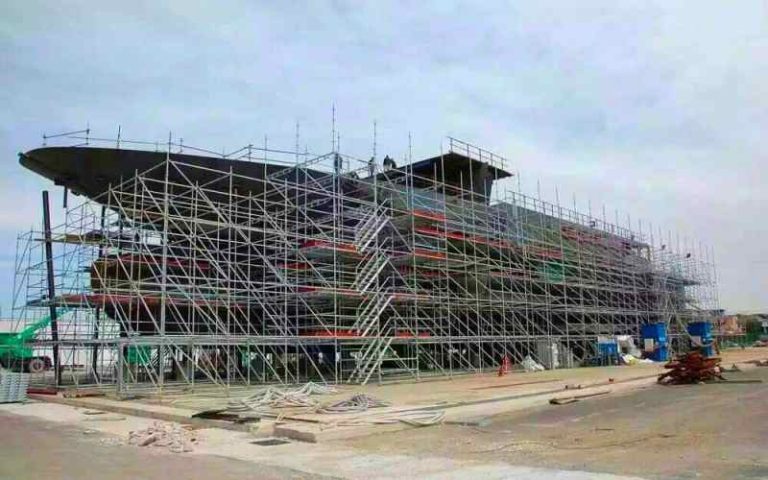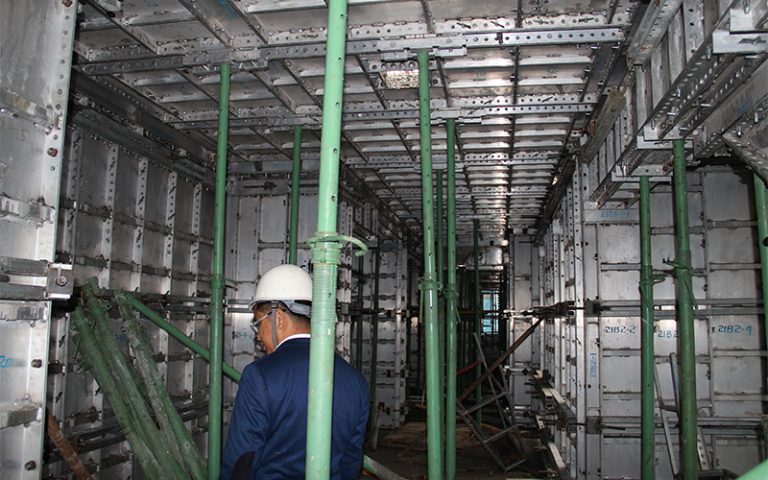Understanding the Basics of Scaffolding Systems
Perancah is a temporary structure used to support workers and materials during the construction, maintenance, or repair of buildings and other large structures. Among the various scaffolding systems available today, Ringlock and Cuplock stand out as the most widely used modular scaffolding types globally.
Modular systems differ from traditional tube-and-coupler setups, using prefabricated components designed for faster assembly and enhanced safety. Choosing the right scaffolding system can significantly influence a construction project’s cost, speed, and safety.
What is Cuplock Scaffolding?
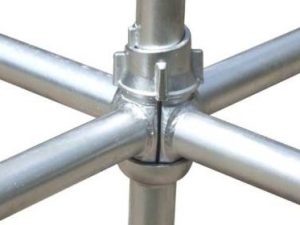
Cuplock scaffolding is a highly adaptable system developed in the 1950s in the UK. It features a unique “cup and blade” joint system that locks horizontal and vertical members together.
Key Components of Cuplock:
- Vertical Standards with welded bottom cups
- Horizontal Ledgers with blade ends
- Top cups that twist and lock the ledger into place
Advantages:
- Quick horizontal connections
- Reduced loose parts
- High axial load capacity
Common Use Cases:
- Shoring
- Formwork support
- Façade maintenance
- High-rise building works
What is Perancah Ringlock?
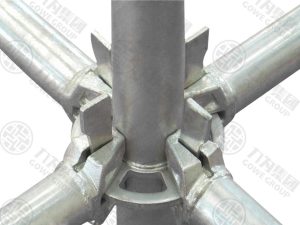
Ringlock scaffolding is a more advanced modular system that was introduced later. It is known for its precision-engineered design and quick-connect technology. It uses rosette nodes welded at intervals on vertical posts, allowing up to eight connections in a single point.
Main Components:
- Vertical standards with rosette rings
- Horizontal ledgers and diagonal braces
- Wedge heads for quick-lock insertion
Benefits:
- Speedy assembly
- High versatility in complex geometries
- Excellent strength and stability
Common Applications:
- Industrial maintenance
- Oil & gas platforms
- Infrastructure projects (bridges, tunnels)
- Shipbuilding and repair yards
Key Differences Between Ringlock and Cuplock Scaffolding
| Feature | Cuplock | Ringlock |
| Joint Mechanism | Cup & blade | Rosette & wedge |
| Connections/per | Node 4 | Up to 8 |
| Assembly Time | Moderate | Faster |
| Angular Flexibility | Limited | High |
| Material Strength | Good | Excellent |
| Fleksibiliti | Medium | Very High |
Ringlock’s modular design allows it to adapt to various structures, making it ideal for complex architectural and industrial projects.
Structural Design Comparison
Cuplock uses fixed connection points, offering stability but limiting angles. Ringlock, on the other hand, supports angular bracing up to 45°, giving it a significant edge in adaptability.
- Nodes per vertical: Cuplock has fixed nodes; Ringlock has rosette nodes every 0.5 meters.
- Horizontal members: Cuplock ledgers rely on locking cups; Ringlock uses wedge heads and is faster to secure.
Assembly and Dismantling Efficiency
When time and workforce are constraints, Ringlock excels due to its tool-free assembly and lighter components.
- Cuplock: A hammer is required to secure top cups.
- Ringlock: Toolless wedge connections allow faster setup.
- Result: Ringlock can be 30–40% quicker to erect and dismantle.
Load Bearing and Stability
Both systems are engineered for strength, but Ringlock generally supports higher loads due to its rosette design and better force distribution.
- Vertical Load Capacity: Up to 24 kN (Cuplock), up to 30+ kN (Ringlock)
- Resistance to lateral forces: Higher in Ringlock due to additional diagonal bracing options
Versatility and Adaptability on Complex Projects
For irregular shapes and structures like tanks, domes, or ship hulls, Ringlock is the preferred choice.
- Cuplock: Better for repetitive, uniform setups
- Ringlock: Suited for curved, inclined, or complex geometries
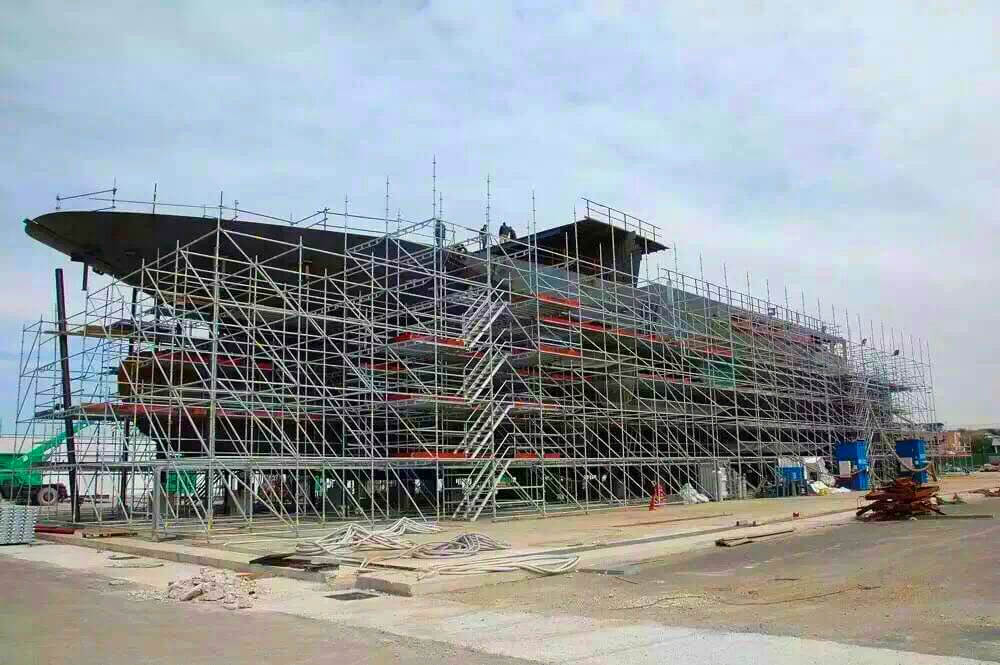
Safety Features and Compliance
Safety is paramount in scaffolding. Ringlock systems offer more guardrail options, toeboards, and safer platforms than Cuplock.
- Ringlock: Often compliant with OSHA and EN12810/EN12811
- Cuplock: May lack some modern safety features unless custom-modified
Durability and Maintenance
Both systems are made from galvanized or high-tensile steel, but Ringlock components tend to have better surface coatings and longer life spans.
- Cuplock: Susceptible to rust if not hot-dip galvanized
- Ringlock: Often comes with advanced anti-corrosion finishes
Cost Analysis: Cuplock vs Ringlock
| Cost Factor | Cuplock | Ringlock |
| Initial Purchase | Lower | Higher |
| Rental | Moderate | Premium |
| Labor Savings | Average | High |
| ROI Over Time | Moderate | High |
Though Ringlock is costlier upfront, it often pays off in terms of time savings and reuse value.
Preferred Applications by Industry
- Pembinaan: Both are used
- Oil & Gas: Ringlock dominates
- Infrastruktur: Ringlock preferred
- Façade Work: Cuplock can be sufficient
Regional Popularity and Market Trends
- Asia: Cuplock is still widely used due to cost sensitivity
- Europe/USA: Ringlock is growing rapidly in adoption
- Timur Tengah: Mixed usage depending on the sector
Expert Opinions: What Engineers and Site Managers Prefer
Surveys suggest a growing preference for Ringlock due to:
- Fewer accidents
- Faster turnaround
- Better project management efficiency
However, cost-sensitive projects or smaller contractors may still opt for Cuplock.
Environmental and Sustainable Considerations
- Ringlock has higher recyclability and fewer damaged parts
- Both systems reduce wood formwork needs, promoting green building
FAQs – Which is Better, Ringlock or Cuplock Scaffolding?
Q1. Which scaffolding is easier to assemble?
Ringlock, due to its wedge-lock design and tool-less assembly.
Q2. Is Ringlock more expensive than Cuplock?
Yes, but it offers better ROI in large-scale or complex projects.
Q3. Which is safer: Ringlock or Cuplock?
Ringlock, due to enhanced safety features and regulatory compliance.
Q4. Can Cuplock be used for industrial scaffolding?
Yes, but Ringlock is generally preferred in industrial environments.
Q5. Which system lasts longer?
Ringlock systems usually have a longer lifespan due to better materials and finishes.
Q6. Is Ringlock suitable for façade work?
Cuplock is often used for simpler façade scaffolding due to cost.
Conclusion: Choosing the Right Scaffolding for Your Project
So, which is better: Ringlock or Cuplock scaffolding? It ultimately depends on your project needs:
- Choose Cuplock if you’re looking for a cost-effective, repetitive setup for simple construction tasks.
- Choose Ringlock if you value speed, safety, versatility, and long-term ROI—especially in industrial, infrastructure, or complex projects.
Both systems serve valuable roles, and understanding their strengths will help you make an informed decision.

